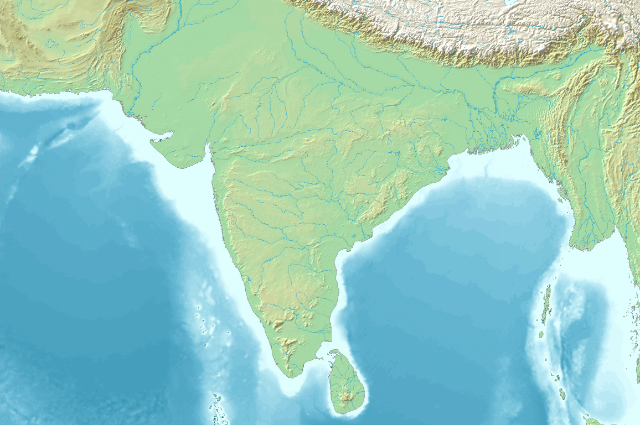Imagine! The temperature is rapidly falling in the western side of India. One can see high mountain ranges standing at places like Maharashtra, Gujrat, and other western states of India. Hard to believe! Right? However, recent geographical events happening in the African Continent suggests that the continent will split into two halves. The studies recommend that after separation the other part will move towards the Indian sub-continent and collide with it. As a result, high mountain ranges will occur. Due to this, there are chances that the west coast of India will turn into a cold desert as the temperature will drop from 30° Celsius to 0 to 5° Celsius.
The African Continent consists of two tectonic plates: the Nubian plate and the other is the Somali plate. According to recent scientific observations, these plates are splitting into two. The phenomenon of the fissure of these two tectonic plate boundaries is termed The Eastern African Rift System (EARS). It is the best example of the Active Rift Valley system. It is believed that the phenomenon started around 22 million years ago. And now this phenomenon has increased its pace. The rate of the splitting of two tectonic plates is 6-7 mm per year, equivalent to the human nail growth rate. As likely quoted by Ken MacDonald, A professor at the University of California, Santa Barbara, 'If this rifting will continue on its present pace to eventually open up an ocean basin, like the Red Sea, and then later to something much larger, like a small version of the Atlantic Ocean.'
The first notable 35-mile crack emerged in 2005 in Ethiopia. Since then, geologists have shown interest in this ecological event. The other significant event was in 2021 when a volcanic eruption took place near the Goma region in Mount Nyiragongo, which was a result of a series of 92 earthquakes in that region.
On studying the past activities of the tectonic plates, Douwe Van Hinsbergen noticed a similar pattern of the Indian Subcontinent moving towards the Eurasian plate colliding, which resulted in the formation of the world's highest mountain chain. When the Somali plates collide with the Indian subcontinent, it will result in the formation of another mountain range. It's speculated that this formation of a new mountain range will surpass the Himalayan range. They named it the Somaliyan Mountain Range.
It became a concern for Indian scientists as this could affect the Indian subcontinent in the upcoming geographical time scale.
Researchers had developed a hypothesis that the expansion of EARS is due to two tectonic plates drifting apart. It was certified by a study conducted in 2004 by a group of researchers from Delft University of Technology, Netherlands.
The Geological Society of London has speculated a reason for such a phenomenon. This could happen due to the heat flow of the hotter as well as the weaker section of Earth's mantle which is called the asthenosphere, between Ethiopia and Kenya. This reason was confirmed by a recent study from Virginia Tech. They used 3D simulation and discovered that the Rift happened because of the African Superplume.
Discovery of a New Continent that can change the Geological history:
On the other hand, geologists have discovered one continent submerged in the ocean. This recent discovery proves to be a boon for New Zealand. The law passed by the United Nations in 1983 suggests that the Country will have control over the natural resources and minerals that cover the area around 400 km from the coastline. So, if we look from the New Zealand perspective, if New Zealand successfully proves that the submerged land under the sea is a continent, then its territory will be six times larger. That means access to 6 times more natural resources and minerals. Because of this reason, the Government of New Zealand called many International Geologists for detailed research. Now, a question arises as to why the landmass submerged is called a continent. The reason is that the composition of the rock found underneath New Zealand matched more with the continent than the Oceanic bed. Basically, the continental crust constitutes Granite rocks, and the oceanic crust constitutes volcanic Basalt Rock. The researchers named the continent Zealandia. In 2017, the official mapping of Zealandia started to confirm the boundaries, which was completed on 12th September 2023. After the confirmation of its boundaries, it is larger than the Indian subcontinent including India, Bangladesh, Nepal, Bhutan, and Pakistan.
In the end, we can conclude that the dynamic interaction of geological forces has triggered transformative processes that could remodel the Earth's surface and redraw the boundaries of the continents. The creation of the Somaliyan Mountain Range is result of the tectonic plate movement due to the Eastern African Rift System (EARS), which has revealed a rift in the African Continent. The Indian geologists are concerned about the possible effects of geological phenomena. This phenomenon influenced by the African Superplume will affect the Indian Subcontinent in upcoming geographical events.
At the same time, a new perspective on Earth's geology is added by the discovery of Zealandia, a submerged continent off the coast of New Zealand. The official recognition of Zealandia as a continent will greatly benefit New Zealand by extending its territorial authority and providing access to an abundance of minerals and natural resources. Zealandia, this recently discovered continent, defies common wisdom and emphasizes how constantly changing our world.

